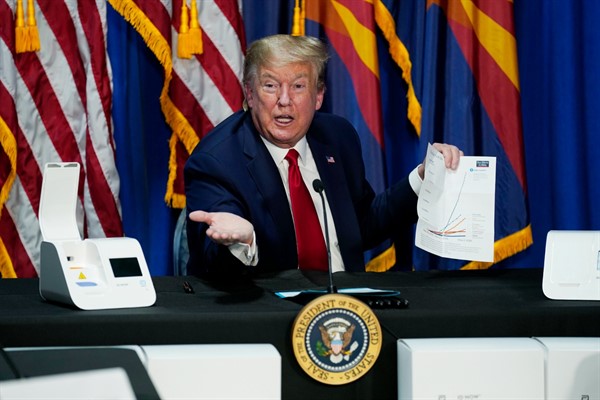For most of the past three years, many close observers of American politics shuddered at the thought of what would happen to the United States if it faced a genuine crisis during Donald Trump’s presidency. Even many of his elite supporters in the Republican Party, in the media and in business cannot have failed to wonder how a man who struggles to organize his thoughts into clear and linear sentences would be able to marshal the full resources and unified will of the United States to deal with a national emergency.
It is no longer speculation after the initial months of the coronavirus pandemic, which has afflicted the United States more than any other country. Everyone, it seems, but Trump’s inner circle recognizes that Washington largely squandered February and March, when the spread of the virus might have been contained and the ultimate death toll kept within far lower limits. And by now it is obvious that strong and active leadership by the federal government would have been far more effective than the approach chosen—or perhaps adopted by default—of allowing each state to go its own way in applying and easing social restrictions. A headline in The Wall Street Journal this week captured a sense of the ongoing American folly: “Even Hard-Hit Areas Ease Limits.”
By encouraging protests against state lockdowns by his gun-toting supporters, Trump has taken the embrace of confusion and mismanagement several steps further, approaching levels of deliberate, government-fostered disorder not seen since late in the rule of the Chinese dictator Mao Zedong, when he incited youth during the Cultural Revolution to attack his own Communist Party elite. “Everything under heaven is in utter chaos, the situation is excellent,” Mao is said to have uttered.

